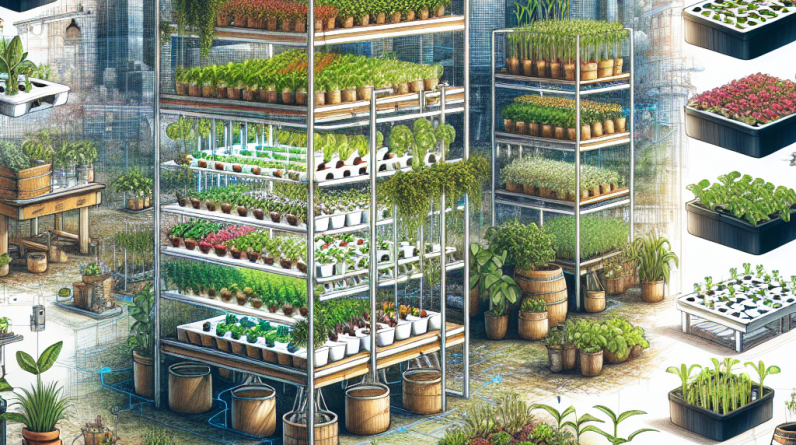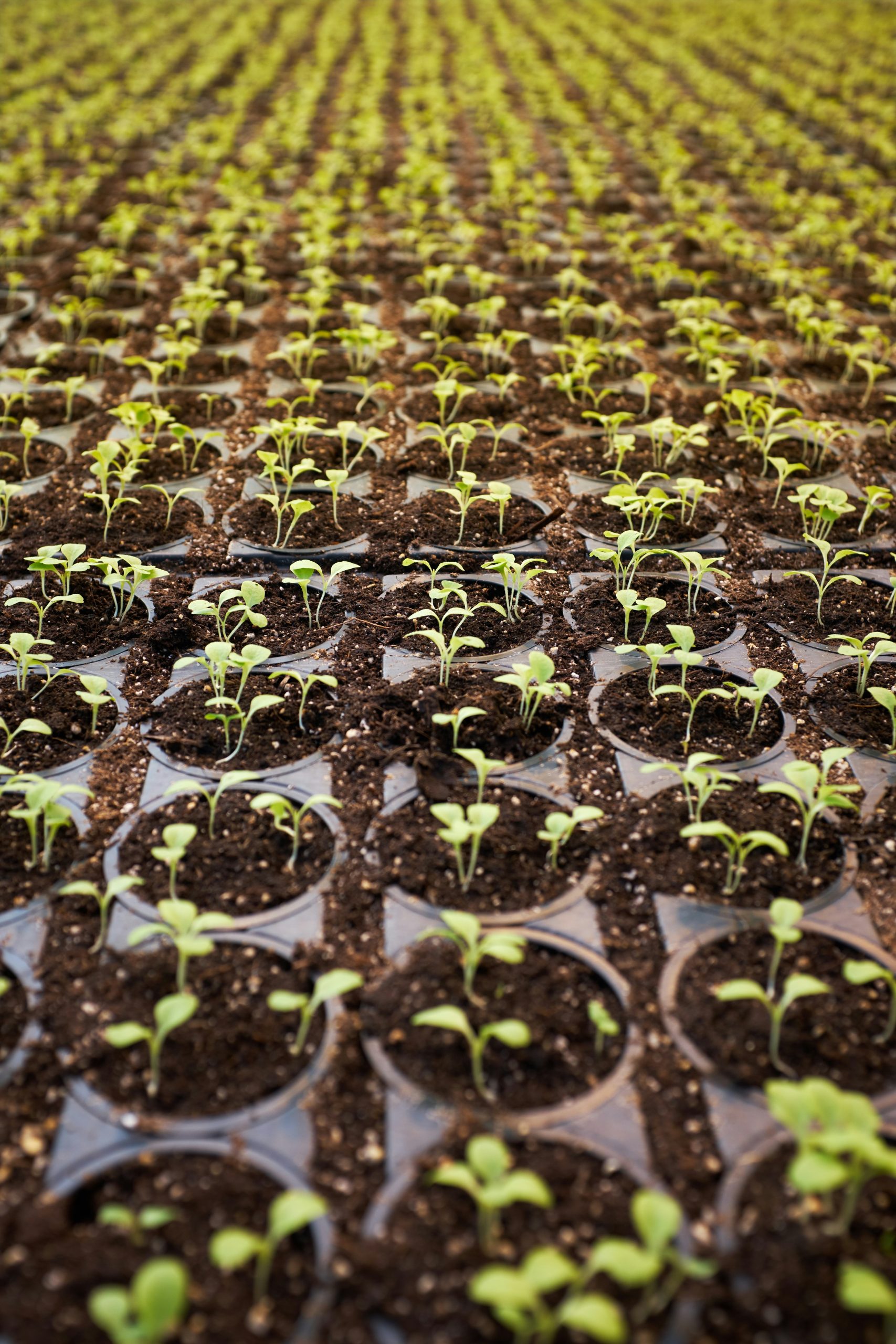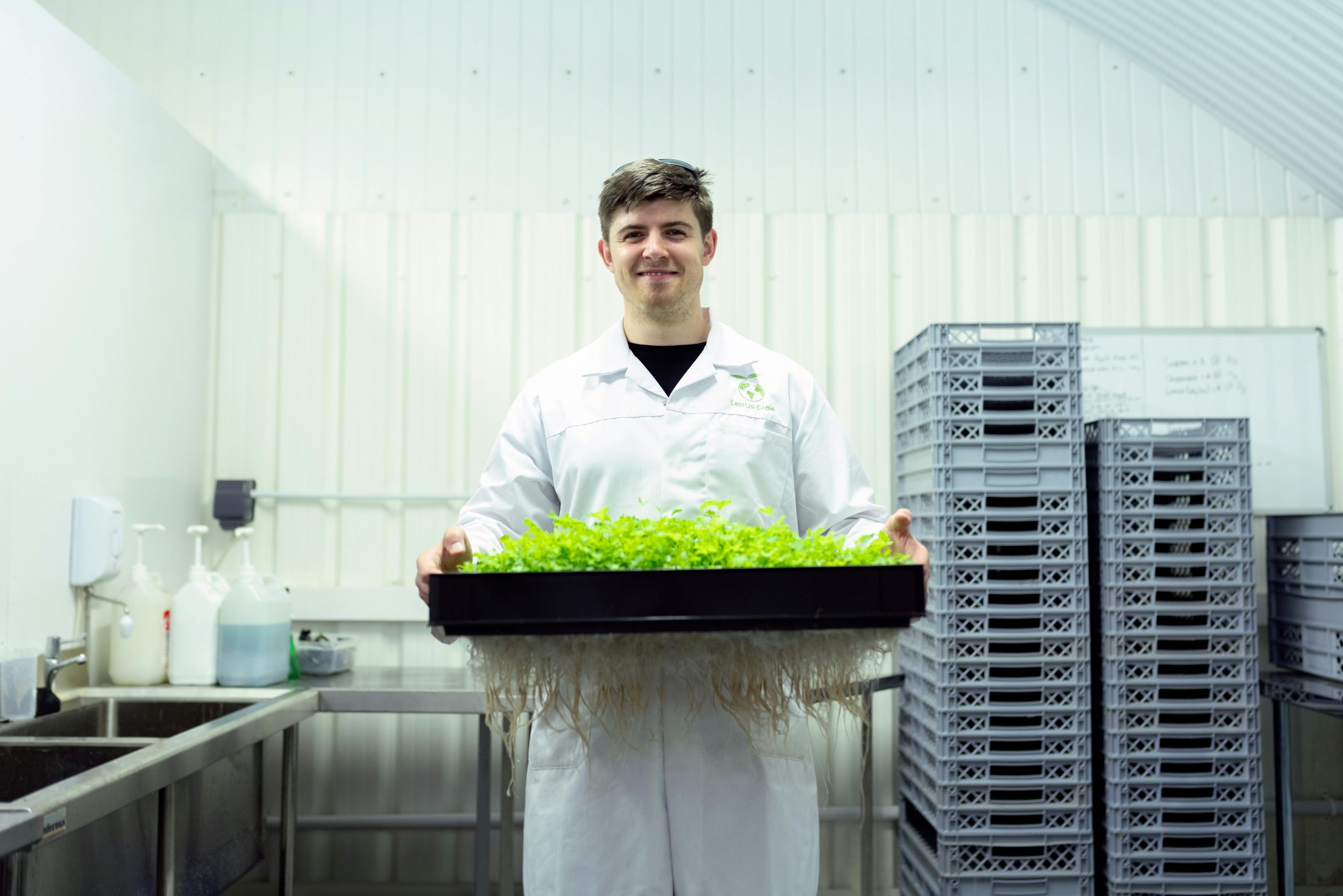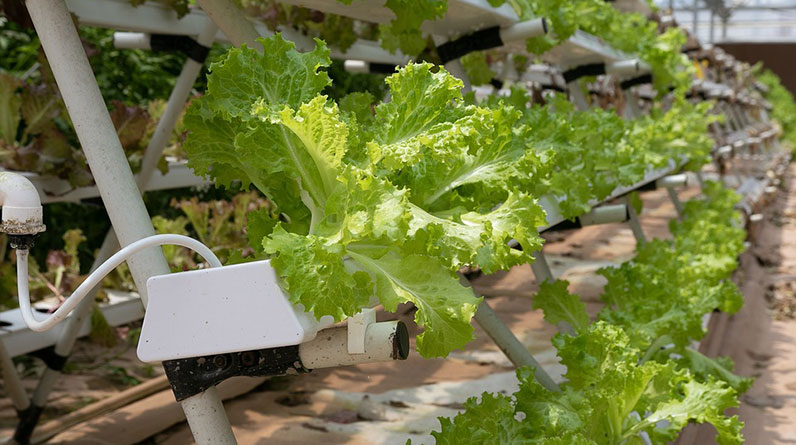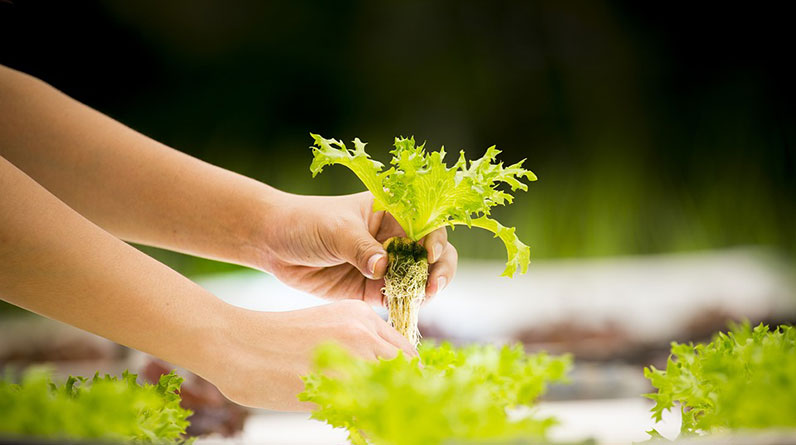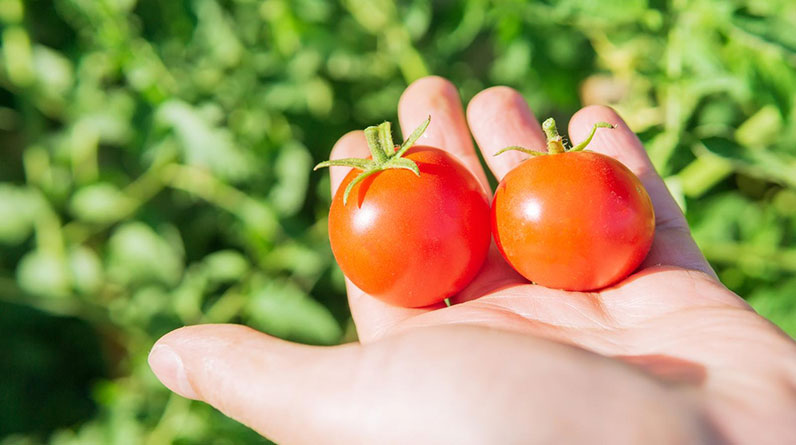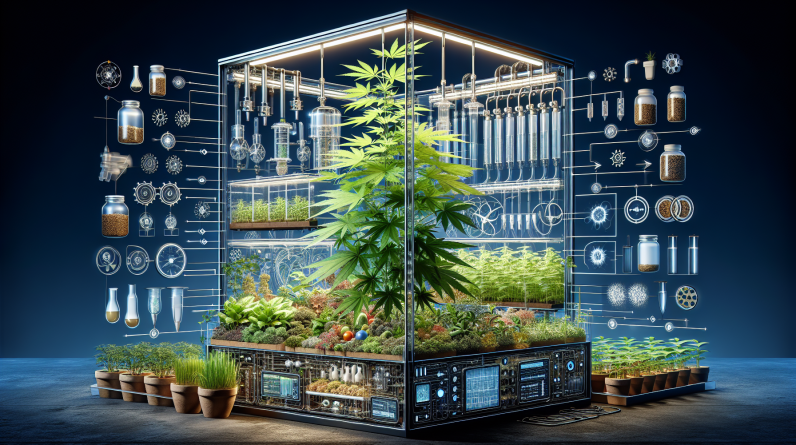
- 1. Understanding the Basics of Deep Water Culture Hydroponics
- 2. Choosing the Right Reservoir and Containers
- 3. Maintaining Optimal Water Quality
- 4. Managing Nutrient Solution Concentrations
- 5. Ensuring Proper Oxygenation
- 6. Monitoring and Adjusting pH Levels
- 7. Lighting Strategies for Deep Water Culture
- 8. Pest and Disease Control in DWC Systems
- 9. Maximizing Yield with System Customizations
- 10. Tips for Successful Deep Water Culture Hydroponics in 2025
1. Understanding the Basics of Deep Water Culture Hydroponics
What is Deep Water Culture Hydroponics?
Deep water culture hydroponics (DWC) is a popular soilless gardening method where plant roots are suspended in nutrient-rich oxygenated water. This system provides continuous access to nutrients, oxygen, and water, making it ideal for fast-growing crops. In 2025, DWC remains a favorite among home growers and commercial farmers alike due to its simplicity and high yield potential.
Unlike traditional soil gardening, deep water culture hydroponics relies on a setup where plant roots are submerged in a tank or reservoir, with aeration provided by air stones or diffusers. This method promotes rapid growth because roots have direct access to nutrients and oxygen, which are critical for photosynthesis and overall plant health.
Understanding the foundational principles of DWC is essential before expanding into advanced tips and system modifications. In the context of 2025 trends, integrating automation and monitoring technologies has become standard practice, ensuring optimal growth conditions at all times.
Why Choose Deep Water Culture Hydroponics?
Many growers prefer DWC for its high efficiency, simplicity, and ability to produce larger yields in a shorter period. Studies show that plants grown in DWC systems can grow 20-25% faster than in traditional soil beds, thanks to the optimal oxygenation and nutrient delivery.
For small indoor gardens or commercial-scale operations, DWC offers scalability options â from small desktop setups to large industrial systems. With minimal moving partsâmainly pumps and air stonesâitâs both cost-effective and easy to maintain.
As we step into 2025, the trend toward sustainable and clean food production fuels the popularity of deep water culture hydroponics, especially with the integration of eco-friendly nutrients and energy-efficient systems.
2. Choosing the Right Reservoir and Containers
Selecting the Proper Container Size
Choosing the right reservoir is crucial for the success of your deep water culture hydroponics setup. For beginner growers, a 5 to 10-gallon bucket is manageable and sufficient for small-scale plants like herbs or leafy greens. Larger systems, such as 20-gallon tanks, are better suited for bigger plants or higher yields.
Efficiency and space optimization are key. If you plan to grow multiple plants, consider using a centralized reservoir with individual net pots or cups. This way, you can customize the environment for each plant while maintaining a unified system.
Pro Tip: Use opaque containers to prevent algae growth, which thrives with light exposure. Maintaining darkness helps keep water clean and clear, supporting healthy root systems.
Materials and Durability
When selecting containers, opt for food-grade plastics free from BPA and other harmful chemicals. These materials are durable, lightweight, and resistant to corrosion from nutrient solutions.
Heavy-duty plastics ensure longevity, especially when exposed to frequent aeration and nutrient changes. Also, coordinate your reservoir size with your available space and grow goals to avoid unnecessary constraints as your plants mature.
In 2025, innovative materials like recycled plastics and biodegradable options are gaining popularity, aligning with sustainability trends in hydroponic gardening.
3. Maintaining Optimal Water Quality
Temperature Control
Water temperature plays a critical role in deep water culture hydroponics systems. Ideally, keep reservoir temperatures between 65-75°F (18-24°C). Temperatures above this range can promote pathogen growth, while lower temperatures may slow nutrient uptake.
In 2025, rapid weather fluctuations and indoor climate variations emphasize the importance of temperature monitoring. Using a reliable aquarium heater or chiller can stabilize water temperature, ensuring consistent growth conditions.
Regularly measuring water temperature with a digital thermometer helps prevent issues before they escalate, protecting your plants’ health and maximizing yields.
Managing Water Chemistry
Good water quality is fundamental. Regularly test your water for pH, EC (electrical conductivity), and dissolved oxygen levels. Maintaining optimal water chemistry ensures nutrient availability and prevents deficiencies or toxicities.
In DWC systems, dissolved oxygen levels should be around 6-8 ppm. Use air stones connected to reliable air pumps to keep oxygen levels high, especially during hot weather or high plant density.
In 2025, smart sensors and IoT devices make it easier than ever to monitor and adjust water quality parameters remotely, enhancing overall system reliability.
4. Managing Nutrient Solution Concentrations
Choosing the Right Nutrients
For deep water culture hydroponics, selecting high-quality, water-soluble nutrients designed for hydroponic use is essential. In 2025, organic options and custom blends tailored to specific plants are increasingly popular.
Common nutrients include nitrogen, phosphorus, potassium, calcium, magnesium, and trace minerals. Properly balanced solutions promote vigorous growth and high yields. For example, leafy greens prefer higher nitrogen levels, while fruiting plants need more phosphorus and potassium.
Experimenting with different commercial nutrient formulations can help you optimize growth for your specific plants and system conditions.
Adjusting Concentrations and Scheduling
Start with a recommended concentration, typically around 1.0-2.0 EC for most crops. Monitor plant responses and adjust accordingly. Over-concentration can cause nutrient burn, while underfeeding leads to deficiencies.
In 2025, automated dosing systems are a game-changer, allowing precise control of nutrient concentrations, reducing waste, and ensuring consistent results. Regular testing and adjustments are key to maintaining optimal plant health.
Change your nutrient solution every 1-2 weeks to prevent buildup of salts and other residues, ensuring a fresh supply of nutrients to your plants.
5. Ensuring Proper Oxygenation
Use of Air Stones and Diffusers
Oxygenating the water in deep water culture hydroponics is vital to prevent root suffocation. The most common method involves using air stones connected to air pumps to diffuse oxygen into the solution effectively.
In 2025, energy-efficient and quieter air pumps are now commonly used, making it easier to maintain ideal oxygen levels without disturbing your grow environment.
Always ensure that air stones are clean and free from clogging. Regular maintenance guarantees consistent oxygen delivery, promoting healthy root development.
Monitoring Dissolved Oxygen Levels
Investing in dissolved oxygen meters helps you keep tabs on oxygen saturation. Ideal levels are between 6-8 ppm for most crops. Deviation from this range can hinder growth or increase pathogen risks.
Incorporating automated systems that monitor DO levels and adjust air pump output accordingly provides peace of mind and consistent results. This approach is becoming standard practice among professional growers in 2025.
Proper oxygenation not only supports healthy roots but also enhances nutrient absorption efficiency, crucial for maximizing yields in deep water culture hydroponics systems.
6. Monitoring and Adjusting pH Levels
The Importance of pH in DWC
Maintaining proper pH levels is essential for nutrient uptake. In deep water culture hydroponics, the optimal pH range is typically 5.5 to 6.5. Deviating outside this range can lead to nutrient lockout and deficiencies.
In 2025, digital pH meters with calibration features are the industry standard, offering accurate readings and easy adjustments. Regular testingâat least once a dayâis recommended for consistent plant health.
Adjust pH using pH up or down solutions, and always measure after each adjustment to prevent overshooting. Keeping pH stable is a cornerstone of successful hydroponic gardening.
Automation and pH Regulation
Automated pH control systems are increasingly prevalent, especially in larger or professional setups. These systems automatically add pH adjusting solutions based on real-time readings, reducing manual labor and human error.
For hobbyists in 2025, simple pH controllers connected to smartphones or monitoring devices can save time and optimize plant growth conditions. Regular maintenance of pH equipment ensures longevity and accuracy.
Remember, consistent pH management supports nutrient availability and overall plant vitality in deep water culture hydroponics systems.
7. Lighting Strategies for Deep Water Culture
Choosing the Right Grow Lights
Lighting is a critical factor in deep water culture hydroponics. In 2025, LED grow lights dominate the market due to their efficiency, spectrum control, and longevity. Selecting the appropriate wattage and spectrum tailored to your plants ensures optimal photosynthesis.
Full-spectrum LEDs that mimic sunlight provide balanced light for vegetative and flowering stages. For example, blue light encourages leafy growth, while red promotes flowering and fruiting.
Placement and distance from plants matterâgenerally, keep lights around 12-18 inches above canopy, adjusting as plants grow. Proper lighting can boost yields by up to 30% compared to inadequate setups.
Lighting Schedules and Automation
Automating light cycles ensures consistency, especially in indoor setups. Most growers use 16-18 hours of light per day during vegetative growth and 12 hours during flowering.
Smart timers and controllers in 2025 enable precise scheduling and even light intensity adjustments based on plant feedback or environmental conditions. This level of control results in healthier, faster-growing plants.
Consistent lighting design, combined with good air circulation, creates a thriving environment for your deep water culture hydroponics system to flourish.
8. Pest and Disease Control in DWC Systems
Preventing Root Diseases
Root rot and other fungal diseases are common threats in deep water culture hydroponics. Proper oxygenation and water circulation are the first defenses. Ensuring dissolved oxygen levels stay high discourages pathogen growth.
Regular cleaning of reservoirs and tools prevents the buildup of harmful microbes. Also, avoid over-fertilizing, which can create imbalances conducive to disease.
In 2025, biological control agents and organic treatments are preferred for disease management, aligning with sustainable gardening trends.
Managing Pests
While DWC systems are less susceptible to soil pests, airborne insects and mites can still pose problems. Maintaining a clean environment and using physical barriers helps prevent infestations.
Introducing beneficial insects or organic pest repellents can control common pests without chemicals. Always monitor plants regularly for early signs of trouble.
Integrated pest management strategies are the most effective in 2025, ensuring a healthy, pest-free system without harming beneficial microorganisms.
9. Maximizing Yield with System Customizations
System Design Variations
Optimizing your deep water culture hydroponics system involves customizing components to suit your space and crop type. Variations include raft systems, flood-and-drain setups, or hybrid solutions.
For example, combining aeration with a flow system can increase oxygen levels and nutrient delivery, boosting plant growth. Modular designs also facilitate expansion as your skills or demand grow.
In 2025, innovations like automated nutrient dosing and remote monitoring further enhance system efficiency and yield potential.
Advanced Techniques for Higher Production
Practicing crop rotation, companion planting, and seasonal adjustments can improve yields within your DWC system. Adding supplemental COâ or improving airflow also contributes significantly.
Data-driven decision-making, supported by sensors and AI-based analytics, allows for precise adjustments that maximize productivity. These techniques are increasingly accessible to hobbyists and large growers in 2025.
By leveraging system customizations and tech advancements, you ensure your deep water culture hydroponics setup reaches its full potential.
10. Tips for Successful Deep Water Culture Hydroponics in 2025
Stay Updated with Trends and Technologies
In 2025, the landscape of hydroponics continues to evolve rapidly. Staying informed about the latest research, tools, and sustainable practices is essential. Subscribe to industry newsletters, join online communities, and attend workshops.
Adopting smart monitoring systems, eco-friendly nutrients, and automation can significantly improve your results and reduce labor.
Experimenting with innovative techniques and sharing experiences helps foster a thriving community and accelerates your success in deep water culture hydroponics.
Maintain Consistency and Observation
The key to thriving in deep water culture hydroponics is diligent maintenance. Regularly check water quality, pH, oxygen levels, and plant health. Keep detailed logs to analyze what works best for your setup.
Patience and adaptability are vital. Troubleshoot issues promptly, and donât hesitate to tweak parameters based on observations. This mindset leads to the best yields and healthier plants in 2025 and beyond.
Conclusion
Mastering deep water culture hydroponics in 2025 involves understanding system fundamentals, optimizing environmental conditions, and embracing technological innovations. By following these 10 effective tips, you can cultivate lush, healthy plants with impressive yieldsâwhether you’re growing herbs, vegetables, or flowers. The keyword phrase deep water culture hydroponics remains at the forefront of innovative, sustainable gardening practices in 2025, empowering growers of all levels to succeed. Stay curious, adapt to new trends, and enjoy the rewarding journey of hydroponic gardening!
Frequently Asked Questions
- What is deep water culture hydroponics?
- Deep water culture hydroponics is a soilless growing method where plant roots are suspended in an oxygenated nutrient solution, promoting rapid growth and high yields.
- How do I maintain water quality in my DWC system?
- Regularly test and adjust pH and EC levels, maintain optimal water temperature, and ensure proper oxygenation with air stones to keep water quality high.
- What are the best lighting options for deep water culture hydroponics?
- LED grow lights are the most efficient and customizable lighting option in 2025, providing full spectrum light tailored to different growth stages.
- Can I use deep water culture hydroponics indoors?
- Absolutely! DWC systems are ideal for indoor gardening and can be set up in small spaces using efficient LED lighting and proper environmental controls.
- What are common challenges in deep water culture hydroponics?
- Common challenges include root rot, pH fluctuations, nutrient imbalances, and inadequate oxygenation. Regular maintenance and monitoring help prevent these issues.


